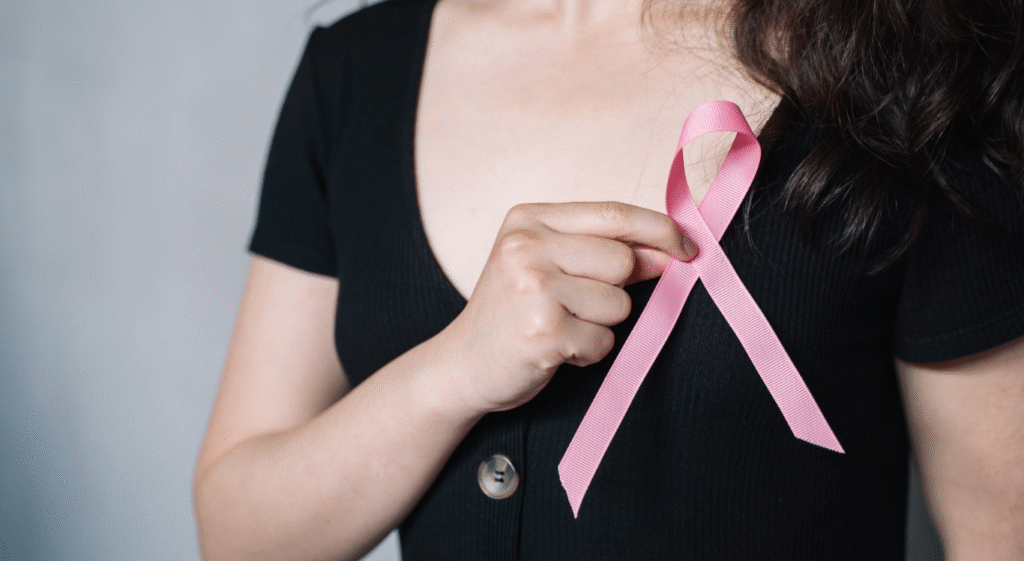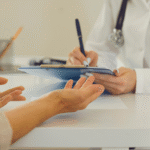Breast cancer is one of the most common cancers found in women, though in rare cases men can also be affected. It occurs when abnormal cells in the breast start multiplying uncontrollably, forming a lump or mass. These cancerous cells may spread to nearby tissues or even other parts of the body if not treated in time.
Understanding breast cancer symptoms is important because early detection can save lives. Often, women ignore small changes in their breasts, assuming they are normal. But being alert can make a big difference. Many cases detected in the initial stages can be treated successfully through surgery, radiation, or medicines.
Doctors and health experts recommend regular self-examination of the breasts as well as routine medical check-ups, especially for women above 40 or those with a family history of cancer. By paying attention to changes and knowing the symptoms, one can act quickly and consult a doctor for further guidance.
Early Signs of Breast Cancer
One of the earliest signs of breast cancer is a lump in the breast or underarm area. The lump is usually hard, painless, and has uneven edges, but in some cases, it may be tender. Not all lumps are cancerous, but any new lump should be checked by a doctor.
Another early symptom can be swelling or thickening in part of the breast. Sometimes the size or shape of the breast changes. Women may also notice changes in the skin texture, such as redness, dimpling, or puckering that resembles the skin of an orange.
Nipple changes are also common signs. If there is discharge other than breast milk, such as blood or pus, it should not be ignored. Pain in the nipple or pulling inward of the nipple can also be an indicator. These symptoms do not always mean cancer, but they should be taken seriously.
Regular awareness and self-checks help in catching these signs before the disease grows. If noticed early, breast cancer treatment has a higher success rate and better outcomes.
Changes in Breast Appearance
Changes in how the breast looks are one of the most visible symptoms of breast cancer. A woman may notice that one breast has become larger or has changed shape compared to the other. The skin may look swollen, irritated, or develop rashes around the nipple area.
Sometimes, dimpling of the skin occurs, which makes it look like an orange peel. This happens because the cancer cells block lymphatic vessels under the skin. Redness and warmth of the breast can also be a warning sign. These are often mistaken for infection, but if they persist, medical evaluation is necessary.
Nipple appearance also changes. It may become inverted (turn inward) or look different from before. Continuous itching, scaling, or thickening of the nipple or skin around it may indicate a serious condition.
Being observant of these physical changes is very important. Many women ignore these differences thinking they are hormonal or temporary. But when symptoms last longer than usual, they should not be neglected. Immediate consultation with a doctor ensures timely investigation and treatment.
Pain and Discomfort
Breast cancer does not always cause pain in the early stages, which is why it often goes unnoticed. However, some women may experience pain or tenderness in the breast or nipple area. This pain may not go away with time and may feel different from regular menstrual cycle discomfort.
If there is continuous discomfort, swelling, or a burning sensation in the breast, it is important to pay attention. Pain that worsens with time or is localized in a particular spot may be linked with an underlying problem.
In some cases, women also feel discomfort in the armpit due to swollen lymph nodes, which may signal that cancer cells have spread beyond the breast. While not every pain indicates cancer, persistent or unusual pain should always be checked.
Listening to your body is crucial. Ignoring these discomforts can delay diagnosis and make treatment more complicated. It is always better to be cautious and seek medical advice at the earliest.
When to See a Doctor
If a woman notices any changes in her breast such as lumps, nipple discharge, unusual pain, or skin changes, she should consult a doctor without delay. Many women hesitate due to fear or embarrassment, but early medical advice can make treatment easier and more successful.
Doctors may suggest tests like mammograms, ultrasound, or biopsy to confirm whether the symptoms are cancerous or due to some other reason. Even if the symptoms turn out to be non-cancerous, it is always better to rule out the risk.
Women above the age of 40 should make regular screening a habit. Those with a family history of breast cancer or other cancers should be even more alert. Self-examination once a month is highly recommended for all women.
The golden rule is simple: if something feels different and does not go away with time, do not ignore it. Seeking timely help ensures peace of mind and increases the chances of early recovery.



